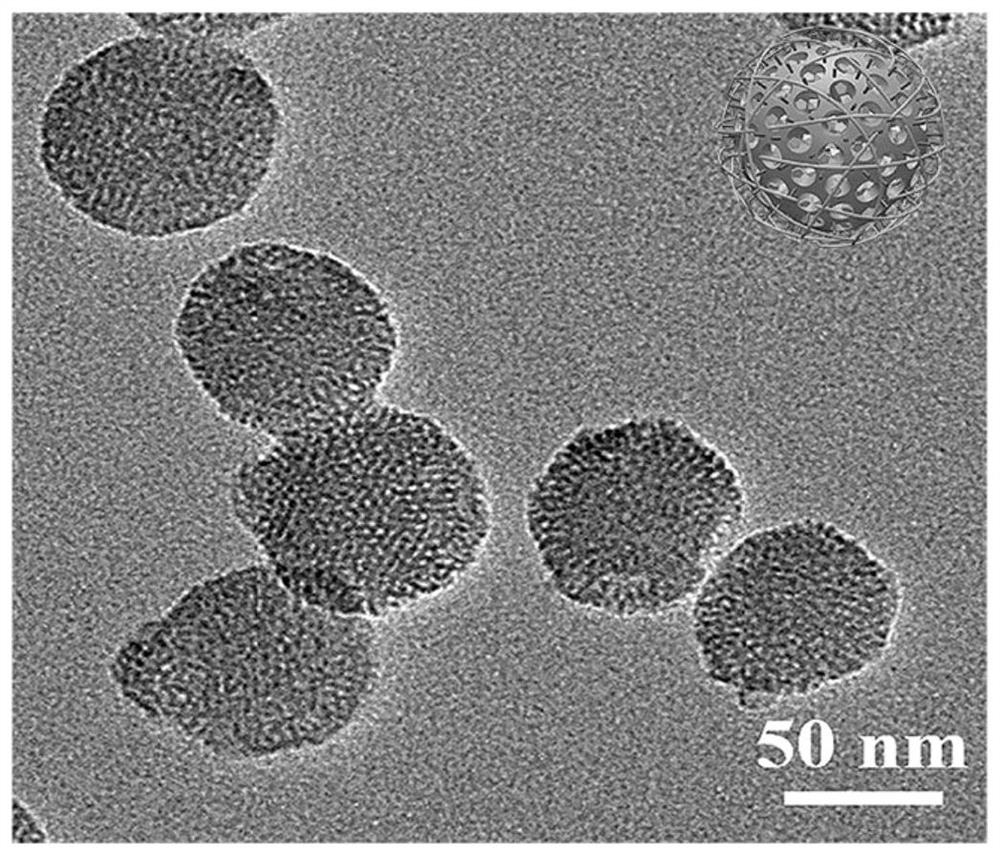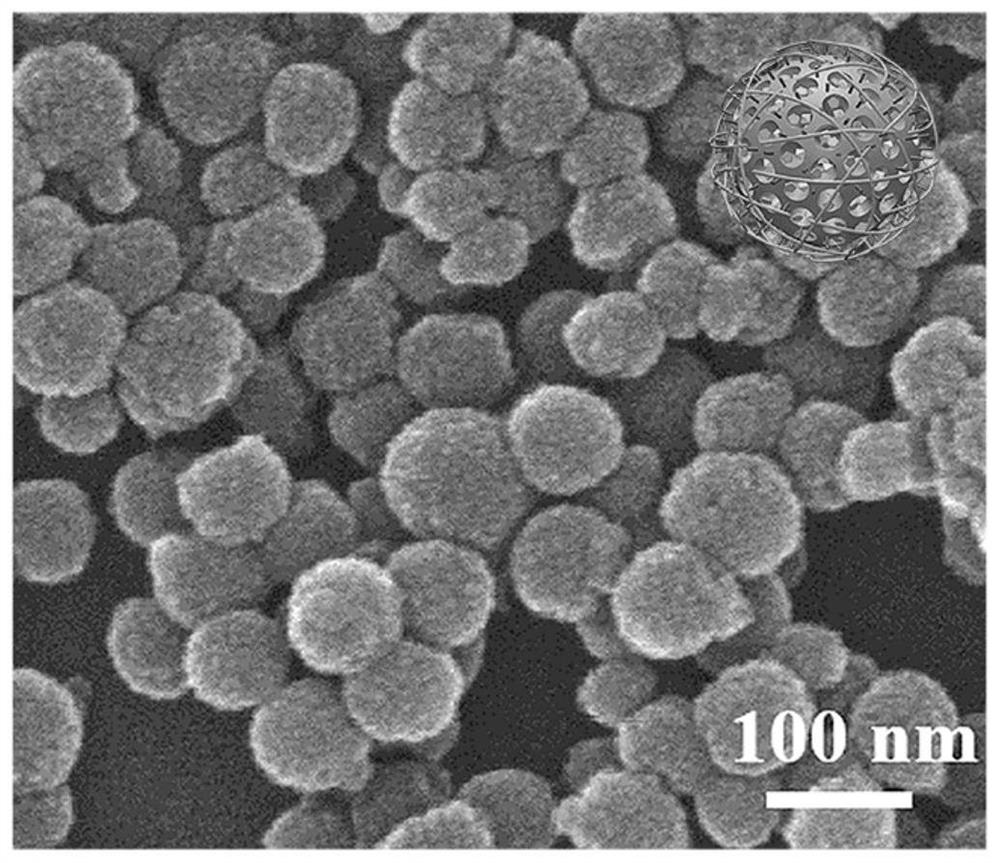Super-assembled polyethylene glycol/silicon dioxide nano sensing probe as well as preparation method and application thereof
A technology of silica and polyethylene glycol, applied in chemical instruments and methods, luminescent materials, etc., can solve the problems of complicated probe preparation methods, unadjustable detection function, and limited detection sensitivity, and achieve improved hydrophilicity , adjustable function and simple synthesis method
- Summary
- Abstract
- Description
- Claims
- Application Information
AI Technical Summary
Problems solved by technology
Method used
Image
Examples
Embodiment 1
[0038] The preparation method of 2MI-P@MSN nano-probe specifically includes the following steps:
[0039] Step 1: Prepare a mesoporous material (MSN) with ordered channels based on the sol-gel method.
[0040] Step 2: Soak the prepared MSN mesoporous material in anhydrous toluene and 3-aminopropyltriethoxysilane (APTES) solution at 80° C. for 2 hours.
[0041] Step 3: Wash the mesoporous material three times with toluene and methanol respectively to remove excess unreacted APTES.
[0042] Step 4: Dry at room temperature to obtain aminated MSN mesoporous material (MSN-NH 2 ).
[0043] Step 5: Dissolving salicylaldehyde in a mixed solution of tris(2-aminoethyl)amine and ethanol was refluxed and stirred for 5 hours to prepare a zinc ion probe (PZn).
[0044] Step 6: cooling the prepared zinc ion probe, washing with ethanol and filtering to obtain the final yellow precipitate (PZn).
[0045] Step 7: Add MSN-NH 2 Add PZn and 2MI mixed methanol solution, and then ultrasonically...
Embodiment 2
[0051] The preparation method of 2MI-P@MSN nano-probe specifically includes the following steps:
[0052] Step 1: Prepare a mesoporous material (MSN) with ordered channels based on the sol-gel method.
[0053] Step 2: Soak the prepared MSN mesoporous material in anhydrous toluene and 3-aminopropyltriethoxysilane (APTES) solution at 60° C. for 3 h.
[0054] Step 3: Wash the mesoporous material three times with toluene and methanol respectively to remove excess unreacted APTES.
[0055] Step 4: Dry at room temperature to obtain aminated MSN mesoporous material (MSN-NH 2 ).
[0056] Step 5: Dissolving salicylaldehyde in a mixed solution of tris(2-aminoethyl)amine and ethanol was condensed under reflux and stirred for 6 hours to prepare a zinc ion probe (PZn).
[0057] Step 6: cooling the prepared zinc ion probe, washing with ethanol and filtering to obtain the final yellow precipitate (PZn).
[0058] Step 7: Add MSN-NH 2 Add PZn and 2MI mixed methanol solution, and then ultr...
Embodiment 3
[0061] The preparation method of 2MI-P@MSN nano-probe specifically includes the following steps:
[0062] Step 1: Prepare a mesoporous material (MSN) with ordered channels based on the sol-gel method.
[0063] Step 2: Soak the prepared MSN mesoporous material in anhydrous toluene and 3-aminopropyltriethoxysilane (APTES) solution at 90° C. for 1 h.
[0064] Step 3: Wash the mesoporous material three times with toluene and methanol respectively to remove excess unreacted APTES.
[0065] Step 4: Dry at room temperature to obtain aminated MSN mesoporous material (MSN-NH 2 ).
[0066] Step 5: Dissolving salicylaldehyde in a mixed solution of tris(2-aminoethyl)amine and ethanol was refluxed and stirred for 2 hours to prepare a zinc ion probe (PZn).
[0067] Step 6: cooling the prepared zinc ion probe, washing with ethanol and filtering to obtain the final yellow precipitate (PZn).
[0068] Step 7: Add MSN-NH 2 Add PZn and 2MI mixed methanol solution, and then make it uniformly ...
PUM
 Login to View More
Login to View More Abstract
Description
Claims
Application Information
 Login to View More
Login to View More - R&D
- Intellectual Property
- Life Sciences
- Materials
- Tech Scout
- Unparalleled Data Quality
- Higher Quality Content
- 60% Fewer Hallucinations
Browse by: Latest US Patents, China's latest patents, Technical Efficacy Thesaurus, Application Domain, Technology Topic, Popular Technical Reports.
© 2025 PatSnap. All rights reserved.Legal|Privacy policy|Modern Slavery Act Transparency Statement|Sitemap|About US| Contact US: help@patsnap.com



